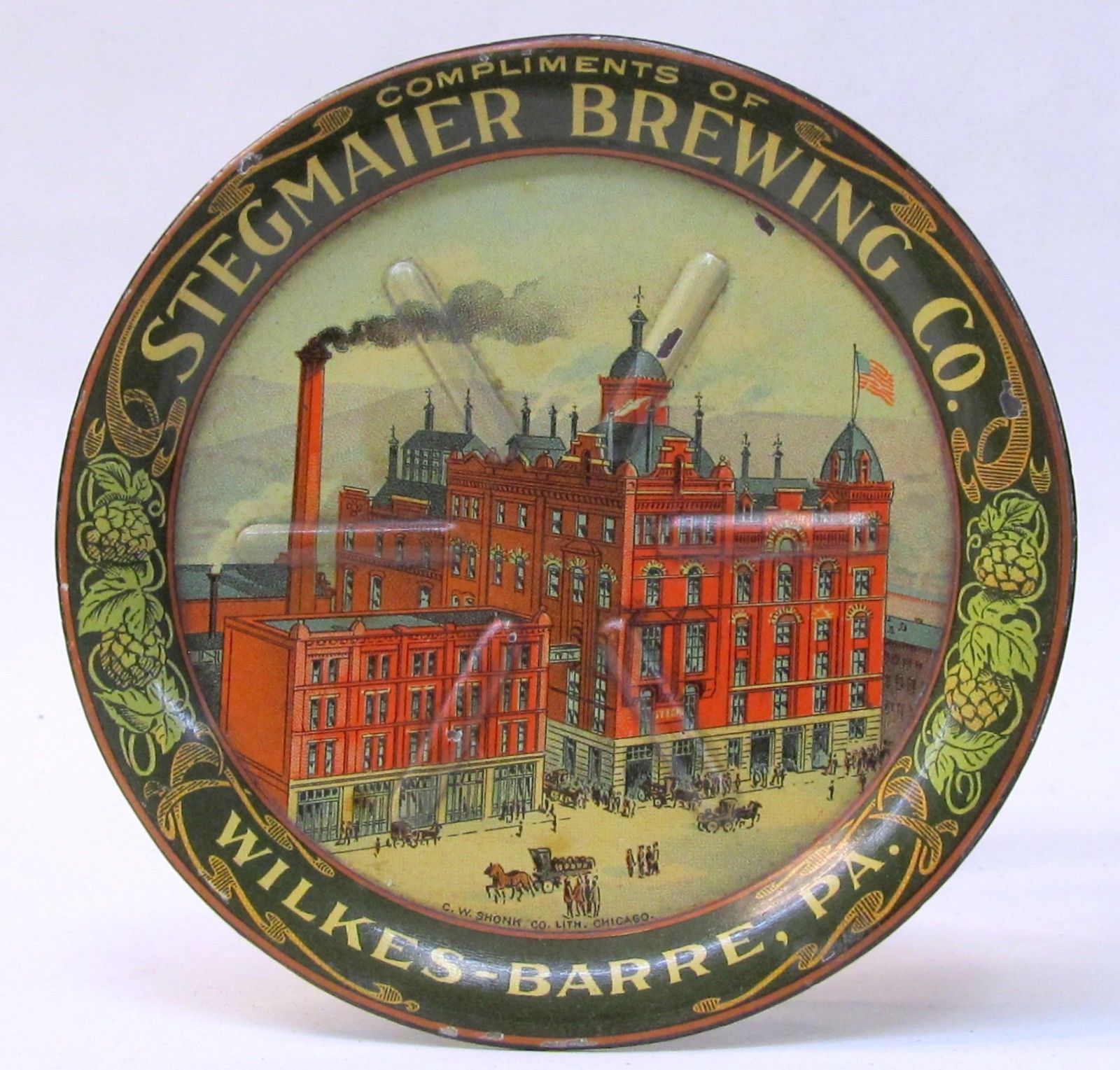PA based breweriana collectors today who have an interest in the Stegmaier Brewing Company are blessed as the Stegmaier family truly believed in the power of advertising based on the amount of quality memorabilia which exist today from this brewery.
Pictured here is a nicely done factory scene from the Wilkes-Barre based brewery. Tip trays and larger serving trays were commonly used by breweries in the early 1900’s, but many of the prettiest ones and the ones which command most collector’s interest are the trays which feature an image of the brewery itself. The featured tip tray from Stegmaier was produced by the Chas. W. Shonk Lithographic Company in Chicago, IL, and it features a bustling scene of activity at the brewery, including several horse drawn wagons. With advertising and early photographs, the appearance of a horse drawn wagon advertising a product often creates much more interest in the item itself. Most collectors love to see the names of a long lost company painted on the side of the wagon for easy identification.
CHARLES STEGMAIER’S STUMBLE INTO SUCCESS, OR WAS IT BRILLIANT MARKETING?
Charles Stegmaier learned the art of beer making in his native Germany in the 1840’s, but he moved to America during the great famines of the 1840s and settled in Philadelphia once he arrived. Charles immediately took employment in a brewery and was able to hone his skills there until the Panic of 1873 put his employer out of business. Out of a job, Charles went to work for a hotel, but after only two years, he was back in the brewery business when he bought the Joel Bowkley Brewery with his son Christian.
Success followed immediately, and by the early 1900’s, the Stegmaier Brewery in Wilkes-Barre was the largest brewery between Philadelphia and Pittsburgh. Many gold medals were won at expositions all over the world. However, as an adverting fan, I have to wonder if the crazy amount of advertising the company sanctioned didn’t help propel the business to the top? Today one can easily find all sorts of early pre-prohibition advertising items from the brewery with relative ease, including trays, signs, lithographs, openers, steins, and other giveaways. The company had an amazing rebound once prohibition ended and they continued to advertise heavily with promotional items, however, they finally hit hard times in the 1970’s and eventually sold out to the Lion Brewery which was also based in Pennslyvania.

